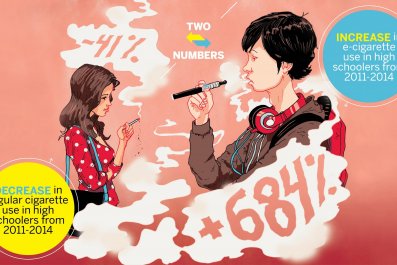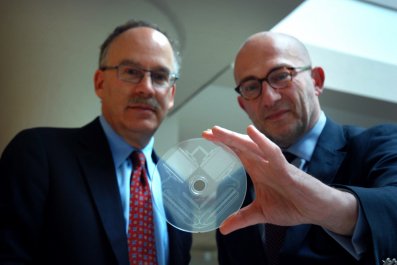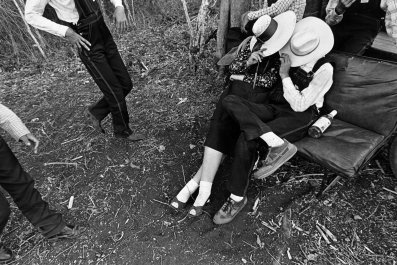Few things are more satisfying than watching corporate criminals get what they deserve. The damage these people inflict on their victims always outweighs the impact of some schmuck who robs a liquor store. But all too often the silk-suited crowd gets off without even a hand slap, while the other crook gets dumped in prison for decades.
Unfortunately, the widespread knowledge that the rich often go unpunished can create a different problem: a societal bloodlust to punish someone—anyone—for a financial catastrophe, even when those waving pitchforks and torches can't point to any law that was broken. That is why so many convictions in high-profile white-collar cases result in reversals: lousy cases that never should have been brought. Virtually every jury verdict in cases brought against Wall Streeters in the 1980s was tossed out by higher courts, which often held that valid defenses were disallowed or the government never proved that a crime had been committed.
Then there is the thing that blows up an enormous number of possible white-collar cases: mens rea, a five-dollar legal term that asks, Did the guy intend to commit a crime? As the Supreme Court stated in a 1971 case, someone who honestly believed he was shipping distilled water but instead sent dangerous acid has not broken the law. Business transactions believed in good faith to be legal aren't crimes.
Which brings us to the latest high-profile white-collar conviction built on a shaky foundation that will likely be tossed out on appeal. Recently, the government brought criminal charges against Navinder Singh Sarao, a 36-year-old British citizen from West London, alleging he had manipulated a stock futures trading market through a complex algorithm executed by computer. While news reports proclaimed Sarao drove the "flash crash" of 2010—when the Dow Jones industrial average plunged about 1,000 points in a few minutes, then recovered—that accusation is ridiculous. More on that later.
Criminal market manipulation cases involving more than a single stock are notoriously difficult to prove, which is why they are brought so rarely. Regulatory actions have a lower standard of proof and often less requirement of intent, so plenty of civil actions are brought by regulators. In fact, the Commodity Futures Trading Commission (CFTC) also charged Sarao, but that is a civil case, a very different beast, so let's just focus here on the crummy criminal case.
Sarao is a high-frequency trader in a market called the E-Mini S&P—that is, someone who trades lightning-fast using sophisticated computers and algorithms. In general, these traders buy and sell high volumes in seconds, trying to capture a fraction of a penny—or, on an amazing trade, a few cents—on each transaction. For the most part, they are competing against other high-frequency traders, not traditional investors. All of this, by the way, is legal.
As described in the criminal complaint, Sarao placed multiple large sell orders—usually just a bit below the best asking price. In other words, he was telling the market there was lots of interest in selling futures, which would tend to drive the market down. As the asking prices fell, Sarao's program would continue to move his position away. This could result in his placing hundreds of orders modified thousands of times. Then he would cancel the orders or shut off the program, which, according to the government filings, would lead the market to go back up in price while he traded around those changes.
This was clever, but was it illegal? The government labels this kind of trading "layering," which is a type of "spoofing''—terms that, as defined under criminal law, mean basically "Who the hell knows?" Here's the definition offered by the Securities and Exchange Commission (SEC) in a big 2012 layering case: In layering, "a trader places a buy (or sell) order that is intended to be executed, and then immediately enters numerous non-bona fide sell (or buy) orders for the purpose of attracting interest to the bona fide order. These non-bona fide orders are not intended to be executed.... Immediately after the execution against the bona fide order, the trader cancels the open, non-bona fide orders."
OK, got it: A trader places a small order on one side of where trades are being done, then a huge order on the other side, moving the market. The small order gets executed, the trader cancels the huge order, and the market returns to where it was.
So if that is the definition, why don't the charges say Sarao did that? In the vast majority of transactions cited by the government, at no point is Sarao described as having first established a small position before putting his massive (and usually canceled) orders on the other side of where futures were trading. Instead, he enters the massive orders, then places the small order. In other words, he does it backwards from what the SEC describes as layering.
The government makes a to-do out of the fact that the time between Sarao's orders was milliseconds, as if the order of trading was irrelevant. So? Sarao wasn't bidding against little old ladies whose gnarled fingers were slowly tip-tapping on keyboards. He was battling with traders similar to himself, including many with lots more computerized firepower than he had.
The filing cites 10 trading days when Sarao engaged in spoofing. Of those, four occurred before President Barack Obama signed the Dodd-Frank Wall Street Reform and Consumer Protection Act, the first law to ever mention spoofing. To declare those first four trades illegal, the government cites a law passed in 2009 that says nothing about spoofing but instead declares only that it's a crime to defraud a person in the futures market through false pretenses. (Note to prosecutors: You will be asked, either in court or on appeal, why, if the 2009 law wasn't vague—thus making it unconstitutional to declare all traders were on notice that spoofing was illegal—was that spoofing section of Dodd-Frank necessary.)
Let's start with those first four, pre-Dodd-Frank transactions. To meet the terms of the 2009 law, the government is going to have to prove Sarao's large transactions were false or fraudulent. But if someone can take the buy or sell order put up by a trader, then the transaction is, by definition, legitimate, and Sarao's offers were at market risk. The government's filing fudges by declaring that the structure of Sarao's transactions "virtually ensured" they would not be filled and that he "nearly always" canceled the orders without executing them. And it is in those "virtuallys" and "nearlys" that legal cases fall apart.
If the orders might be executed, then they were at market risk. And if they were at market risk, how can the government prove Sarao knew they were fraudulent? In fact, were the offers that were executed fraudulent up until the millisecond some other trader took them?
Which brings us to the other six trades covered by Dodd-Frank, which attempted to specifically outlaw spoofing (and thus its variation, layering). There was a challenge to writing this part of the law: Traders give false signals to the marketplace all the time. Someone who wants to buy may try to make it appear he is trying to sell, and vice versa. It's complicated, but the lawmakers understood that the more they tried to define spoofing, the greater the chance they would transform traditional trading techniques into crimes. To resolve that problem, Congress punted by outlawing any transaction that has "the character of, or is commonly known to the trade as, 'spoofing.'" Yes, the law defines "spoofing" as "spoofing."
The definition of spoofing used in that 2012 SEC case doesn't fit the criminal complaint against Sarao. If he relied on the "commonly known" definition the SEC used, how could he have had the intent to commit a crime? And again, without intent, there is no crime.
Now, as promised, back to the flash crash. The government—and lots of huffing-puffing headlines—try to lay the blame on Sarao by saying he "contributed" to it. (Of course, every person who sold stock at that moment "contributed" to it, which shows the nonsense of that weasel word.)
Nanex, a firm that offers streaming data on all market transactions, shows Sarao's algorithm was shut off almost two and a half minutes before the nosedive occurred. Again, 150 seconds may not seem like much, but in markets it's an eternity. That leads to a second problem: The criminal complaint makes much of the fact that Sarao's program drove the market down, and when it was turned off, prices went up. By the government's logic, Sarao couldn't have been pushing the market down—if what the complaint says is correct, he was pushing the market the other direction. Perhaps that's why the SEC and the CFTC (in a widely criticized report) already named two other culprits: fragmented markets that haven't kept up with the challenges presented by evolving trading techniques, and a large mutual firm that sold a lot of contracts on the E-Mini S&P.
Now that Sarao is out of the markets, things on the E-Mini can return to normal, right? Unfortunately yes, which means it is loaded with spoofing. Nanex, working with Zero Hedge, a website for sophisticated traders, assembled data showing buy and sell orders on the E-Mini on the day after the announcement that Sarao had been charged. The findings: In the one-hour period examined, a massive majority of the contract orders entered into that market were canceled without a single trade. In other words, spoofing.
The government needs to step back, define the crime and find the big-time traders acting with intent to break the law, rather than wasting time on some guy working in his London basement. Either that or waste millions of dollars on a case that will fall apart while the big-time players still spoofing the market laugh at the patsy as they stuff their pockets full of cash.






















